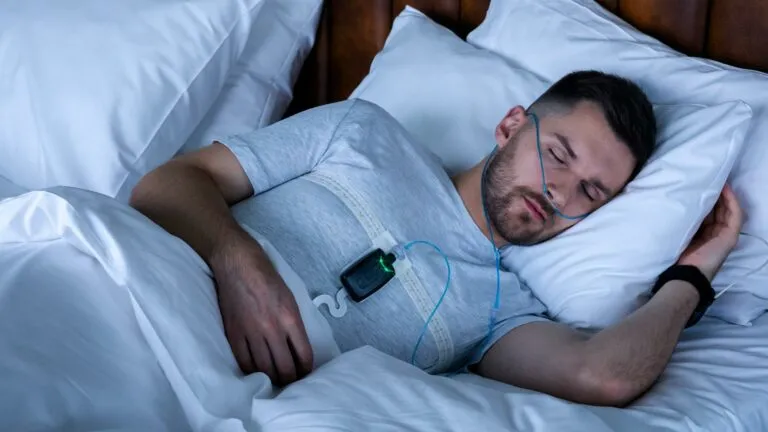Sleep Studies We Perform

In-Lab Sleep Study
- Preparation: We advise you avoid caffeine, alcohol, and large meals before your study. We recommend that you bring comfortable sleepwear and any other necessary personal items.
- Equipment setup: Your technician will apply electrodes with tape or paste to your scalp, face, chest, and legs. These will be hooked up to a monitor to evaluate your brain waves, muscle movement, and heart rhythm. Bands will also be placed around your chest and abdomen to monitor breathing activity. A sensor will be taped under your nose to monitor the airflow when you breathe and another sensor will be taped to your finger to monitor the oxygen saturation of your blood. None of this equipment is invasive and will not cause pain during application or while wearing during the night.
- Monitoring: Your sleep technician will be monitoring your sleep from another room and will be available if you need assistance.
- Sleep environment: We try our best to make your bedroom environment for the sleep study as comfortable as possible.
- Departure: In the morning, the equipment will be removed and you can leave the sleep center.
At The Sleep Clinic, we strive to provide you with your results as quickly as possible.
In the morning after your study is complete, we will ask you to complete a post-test questionnaire. We will also schedule a follow-up appointment to review your study’s findings and determine the best treatment option to fit your needs.
Schedule Your Consultation Today!
Home Sleep Study
Typically before a home sleep test is ordered, you should have a consultation with a sleep specialist or screened by a physician.
During your consultation, the physician will review your sleep concerns, symptoms, past medical history, and anything else that may be relevant or effecting your sleep. Based on this information, the physician will decide if a sleep study is necessary for diagnosis and/or treatment. Home sleep tests are typically reserved for patients with a high pretest probability for sleep apnea.
- Equipment pick-up: You will be asked to come to the sleep lab or clinic to pick-up your home sleep test.
- Equipment setup: You will be provided with detailed instructions on how to setup and use the sleep test.
- Wearing the equipment: You will be instructed to wear the equipment, which typically includes sensors attached to your chest, finger, and/or nose, as well as a device that records your sleep. Please do not damage the equipment as this will incur a fee for you.
- Sleep as normal: You should sleep at home as you normally do as the equipment will record your sleep patterns.
- Return of equipment: The next morning, you will return the equipment to the sleep technician. Failure to do so may incur a fee.
At The Sleep Clinic, we strive to provide you with your results as quickly as possible. The sleep doctor will analyze the data and provide the results to you in a timely fashion and determine the best course of action to fit your sleep needs.
It is important to follow the instructions given to you when using the equipment and to make yourself as comfortable as possible while wearing the equipment. This is to ensure that we get an accurate reading.
In the unlikely event that something goes wrong and we are unable to obtain an accurate reading, we may have to pursue an in-lab sleep study.
Multiple Sleep Latency Test
During an MSLT, the patient is asked to take 4-5 naps at two-hour intervals during the day. Each nap lasts 20 minutes and the patient is monitored for EEG (electroencephalogram) activity to determine when they have fallen asleep. The time it takes to fall asleep during each nap, along with the type of sleep patterns observed, is used to evaluate the degree of sleepiness or drowsiness.
Patients should expect to spend about 5-6 hours in the testing environment for the MSLT. You will be required to do a Polysomnogram the night before the MSLT to determine adequate quantity of sleep and diagnosis of any other sleep disorders.
- Anxiety and/or depression
- Age
- Caffeine
- Drugs and medications
- Amount of sleep prior to the study
- Keep a sleep diary for 2 weeks.
- Maintain a regular sleep schedule. This may help identify other factors that may be causing daytime sleepiness. It will also help to ensure that you are allowing an adequate amount of time for sleep.
- Avoid the use of stimulants such as caffeine prior to your MSLT.
- You may be asked to stop taking certain medications that may alter the results of your test.
- You may be required to take a drug test the morning of your MSLT. The drug test is to ensure that the MSLT will be accurate. The results of the drug test will be kept private between you and your doctor.
